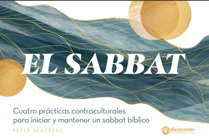- EHS is about helping people develop a deep personal transformative relationship with Jesus Christ out of which they serve the world. EHS is a solution to the problem of shallow Christianity and people not changing. EHS recovers biblical truths overlooked in Western culture (e.g. the gift of limits, loss and grief, brokenness and vulnerability).
- EHS enables leaders to serve both long-term and joyfully out of a deep interior life with Christ.We as leaders cannot give what we do not possess. EHS seeks to equip leaders to serve out a cup that overflows with the love of God.
- EHS is a long-term, missional spirituality. Our aim is to connect people deeply to Jesus, themselves, and each other in order to accomplish the churches’ vision for the world.
- EHS is about teaching people to love well in order to build healthy church communities. We teach people to connect in healthy, authentic ways, breaking unhealthy family of origin and cultural patterns and learning healthy emotional bonding in the new family of Jesus (emotional intelligence –e.g. self-awareness, managing reactivity, social relationships, negotiating differences).
- EHS provides a rich biblical theology, along with practical skills, to build long-term marriage, family, and singles ministries. This is a necessary step for churches serious about deep, beneath the surface, spiritual formation.
- EHS is a powerful, proven paradigm to bridge racial, cultural, economic, and gender barriers. EHS was developed in a multi-racial, multicultural, international context over a 17-year period. It provides a new language and a radical center around Jesus to bring together races, cultures, and social classes.
- EHS offers simple, reproducible, tools that are to be applied outside in the marketplace and in the home. The EH Skills 2.0 were developed out of 16 years of research and development. There is a great deal of theology, theory, and depth behind each tool as they were refined in a cross-cultural, international context.
For a more complete picture click here for the document “Characteristics of Churches Transformed by EHS.”






